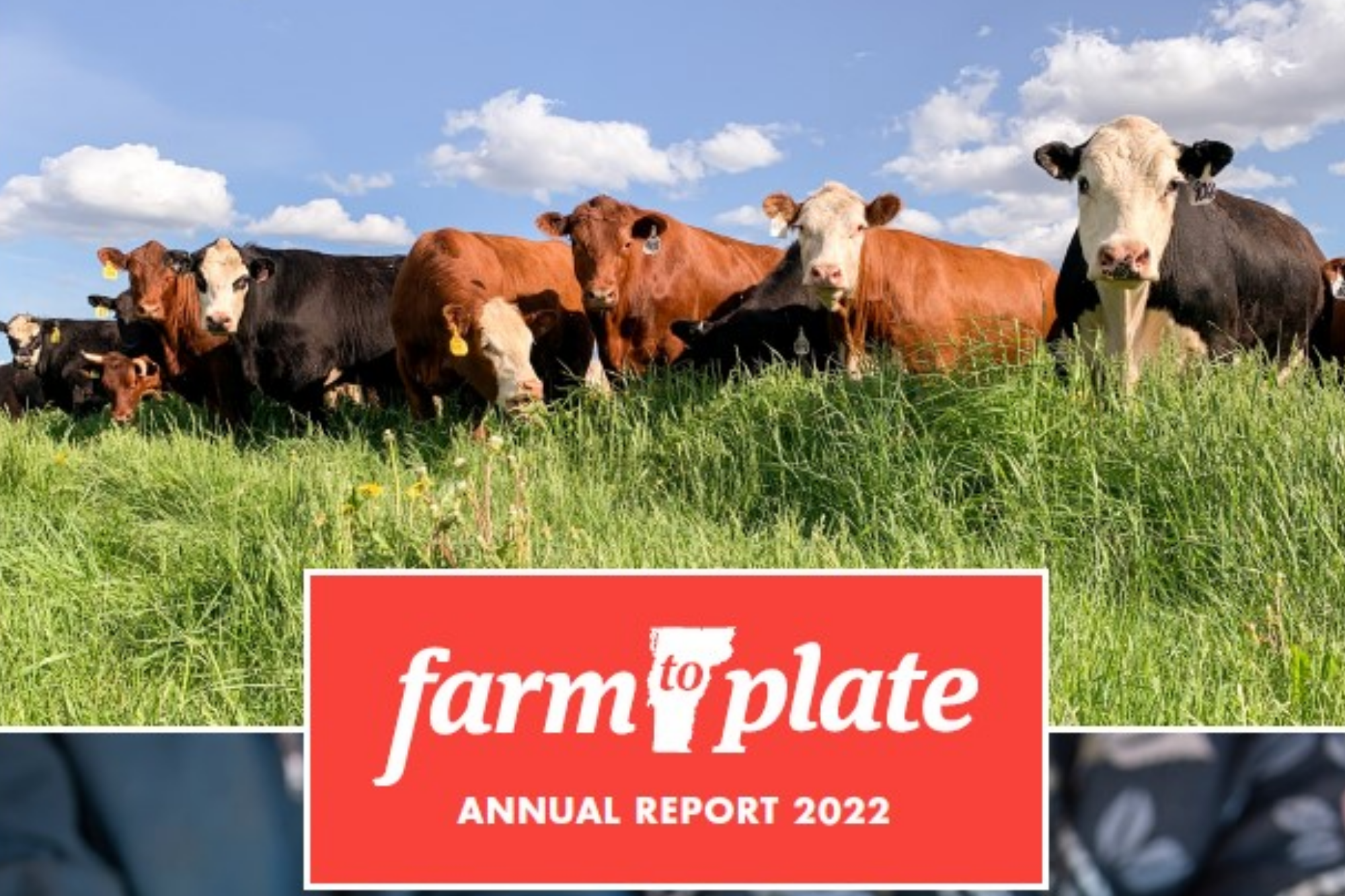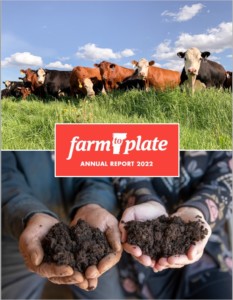Bringing Real and Needed Change to Vermont and Its Food System
February 02, 2023

The ability to not only withstand large shocks, but to bounce back from them, is the hallmark of resiliency. But bouncing back does not necessarily mean that everything looks the same as it was before. Among the many things the pandemic forcefully taught us is that normalcy is a relative condition. With all of the changes that have occurred in the last two years across the globe and in Vermont, it would be disingenuous to say we are closer to returning to normal. Rather, we are in a state of transition to a new “normal,” and with that there is ample opportunity to integrate what we have learned through the pandemic into existing endeavors and to innovate and introduce new ways of doing things. This year’s 2022 Farm to Plate Annual Report provides a picture for how the transition to a new normal is playing out in Vermont’s food system and the Farm to Plate Network, and in doing so, points to the ways in which the food system has bounced back but also the ways it is still vulnerable and needs support.
How has the food system bounced back since the start of the pandemic? While the By the Numbers section of the report may not answer this question fully, it provides critical context for understanding how the pandemic impacted the economic health and food security of Vermont’s food system and how Vermont’s food system has responded since the height of the pandemic.
On the positive side, it reveals that Vermont’s food and farm-based economy is resilient and recovering, and that Vermonters continue to procure local food at high rates in a mix of market channels within Vermont. Employment data from 2021 shows the food economy is recovering, gaining nearly 1,500 net new jobs, the second largest annual employment gain in the food system since 2009—though that follows the loss of 6,500 net jobs in 2020 that resulted from the pandemic. The peak of the pandemic did not depress local food purchasing in Vermont, as total purchases of local food and beverages in Vermont reached $371 million. This represents 16.1% of total food purchases in Vermont, and is an increase of $61 million in local food purchases from 2017.
More worrying is the data related to food insecurity, as they demonstrate how many in Vermont are still vulnerable to national and global events, and how many people in the state are continuously teetering on the edge of being food insecure. Longitudinal data of a cohort of Vermonters collected by NFACT since 2020 shows that inflationary pressures have brought food insecurity levels back to peak levels that occurred during the early shut-down period of the pandemic. This was after levels had started to return to pre-pandemic levels, due to the monumental efforts of charitable food organizations, farms, and communities working alongside the coordinated responses from the Administration and state agencies.
The Farm to Plate Network itself has gone through transition since the start of the pandemic, as it has integrated pandemic lessons and reoriented its structure to implementing the 2021–2030 Strategic Plan. While 2022 was not by any means normal for the Network, the year was filled with signs of the familiar. This has included more in-person work happening for our Network groups and teams, a return to an in-person Annual Gathering at Killington that saw record attendance, and the Network overall in implementation mode after a year and half of engagement in the creation and release of the Vermont Agriculture and Food System Strategic Plan 2021–2030. There are now 19 groups in the Network, guided by the Strategic Plan, working on issues and opportunities that span all aspects of the food system. In this year’s Annual Report we focus on 3 projects covering collaborative industry development between the dairy and beef industries, community-based solutions to composting and organics management, and food security planning that is aligning statewide efforts and forging new cross-sector relationships.
Also, we preview emergent work from a handful of Network groups to keep an eye on in the year ahead that addresses the Strategic Plan’s goal areas. These projects individually, and taken together, demonstrate the depth and breadth of the work happening through the Farm to Plate Network, and act as examples of the transitions happening in our food system oriented to creating a vibrant new normal that will result in a more viable food system.
In full, the 2022 Annual Report demonstrates that the Farm to Plate Network is not only well positioned to advance the strategic goals of the State’s food system plan for the next decade, but is already leveraging the strengths of our foundations to bring real and needed change to Vermont and its food system as it emerges from the pandemic and enters into a new “normal.” We are grateful for the support of the Legislature and Administration, and look forward to our continued work together to strengthen Vermont’s food system.
Jake Claro
Farm to Plate Director
Vermont Sustainable Jobs Fund
The above originally appeared as a letter from Jake Claro, Farm to Plate Director at VSJF in the 2022 Farm to Plate Annual Report.
About Vermont Farm to Plate
Farm to Plate is Vermont’s statewide food system plan implemented by 350+ member organizations of the Farm to Plate Network to meet the goals of legislation passed in 2009 calling for increased economic development and jobs in the farm and food sector and improved access to healthy local food for all Vermonters. Vermont’s farm to plate food system plan is the most comprehensive in the country and the only state that has complete government engagement. In 2019, Vermont Farm to Plate was reauthorized beyond 2020. The program is managed by the Vermont Sustainable Jobs Fund, a nonprofit organization based in Montpelier, Vermont. www.VTFarmtoPlate.com
About the Vermont Sustainable Jobs Fund
The Vermont Sustainable Jobs Fund (VSJF) is a nonprofit organization committed to nurturing the sustainable development of Vermont’s economy. VSJF provides business assistance, network development, strategic planning, and value chain facilitation in agriculture and food system, forest product, waste management, renewable energy, and environmental technology sectors. The Vermont Sustainable Jobs Fund was created by the Vermont Legislature in 1995 to partner with state government, private sector businesses, and nonprofits to build a thriving economic, social, and ecological future for Vermont.





